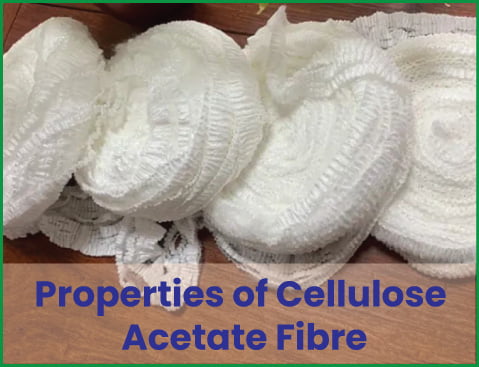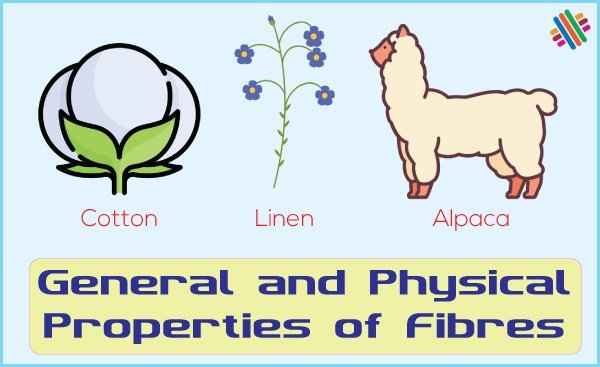Properties of Cellulose Acetate Fibre
Last updated on August 11th, 2023 at 09:22 pm
Cellulose acetate is prepared by heating cellulose with acetyl anhydride, glacial acetic acid and sulphuric acid at low temperature. It is a continuous filament and can be made desired diameter staple, length and crimp. To make staple fibre is cut by cutting unit and crimped.

Physical Properties of Acetate
- Acetate filament: It is in broken strands. The length relies on the capacity of winding mechanism. Modern winders hold many pounds of yarns with one or two knots per cone.
- Acetate staple fibre: It can be cut into desired length. Commonly desired lengths are 1.50, 2, 2.50 and 3 inches till 7 inches for silk industries.
- Fineness: The diameter of the strand ranges from 1.5 to 4.1 deniers for filaments and 1.5 to 20 deniers for staple fibres.
- Appearance and Color: The luster and color may be as desired. Bright luster may be received by lesser twist. Staple are not as lustrous as filaments. Various shades from paler tints to heavy may be acquired as they are the whitest fibres.
- Density: The density ranges from 1.25 to 1.33 gm per cc. relying on the methods of measurement and moisture at the time of making.
- Absorption: The hygroscopicity is corresponding to cellulose but absorption is much less since hydroxyl groups are removed by acetyl groups.
- Tenacity: The wet strength is 65% of dry strength. The fibres can be changed in tenacity by the manufacturers.
- Elasticity: Under general situations, elastic recovery of fibre is completed within few seconds. But for longer time and heavier load creep, deterioration or clearage occurs.
- Thermal properties: It is a thermoplastic material. With temperature it becomes soft. It can be ironed at the temperature up to 2500 F. Above this sticking and melting occurs.
- Conductivity: It is a perfect insulator. The static electricity is created by friction.
Chemical Properties of Acetate
- Effect of alkalis: It is stable to water even at boil and can withstand soap solutions and alkalis at normal temperature.
- Effect of acids: It is unaffected by thin solution but is attacked by strong acids. The degradation of molecules occurs and the chain breaks.
- Effect of oxidizing agents: Mild oxidizing agents may be utilized i.e. chlorine is old and mild peroxide.
- Effect of organisms: It is resistant to attack by bacteria and mildew but it is attacked by moth which makes holes in fabric.
You may also like: Properties of Textile Protein Fibre




I am from Bangladesh .. i am a recycler .. I have lot of production in elthaic fiver.. If need contect with me +8801978448268whats app number